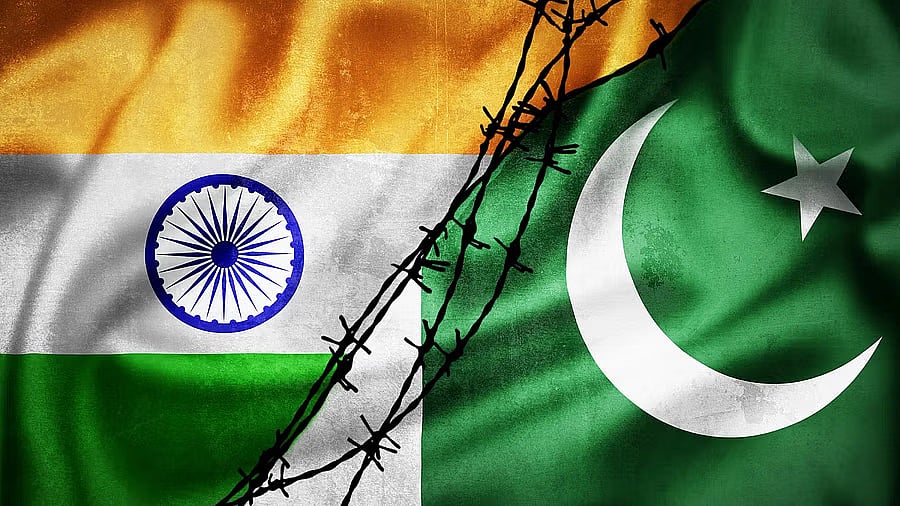
Image for representation showing flags of India and Pakistan.
Credit: iStock Photo
The ceasefire between India and Pakistan, which came into effect on Saturday evening after about a fortnight of confrontation, will be widely welcomed because India has made its point without too much damage and too many casualties. The ceasefire was patchy on Saturday, but has been in force on Sunday with no incidents of violation being reported along the border. The confrontation had stopped short of a war and involved precision missile strikes, drone incursions, and artillery battles across the LoC. India had also attacked a number of terrorist training camps in Pakistan and inflicted damage on the terror infrastructure in that country. The armed forces of the two countries had been fully mobilised and it was when the confrontation was escalating into actual war that the truce was struck. A full-fledged war would have hurt both countries, and they have done well to walk back from the brink.
India has said that it has reached an “understanding” with Pakistan about “stopping military action” and “firing” and that this understanding would not affect the recent punitive decisions taken against Pakistan after the terrorist attack in Pahalgam. The truce and the situation obtaining after that were reviewed at the highest level on Sunday. The ceasefire may be fragile in view of the historical legacy of conflict between the two countries, and Pakistan’s record of provocations, but indications are that it is likely to hold for now. India has made it clear that another act of terrorism would be taken as an act of war, and it is now Pakistan’s responsibility to ensure that peace prevails.
While the calming of the situation is welcome, the processes involved remain unclear. India has said that the ceasefire was bilaterally arrived at between the Directors General of Military Operations (DGMO) of the two countries. But circumstances point to the prodding of both countries by the US. The ceasefire was first announced by President Donald Trump. A US State Department statement called it a “US-brokered ceasefire” and Secretary of State Marco Rubio said the two countries had agreed “to start talks on a broad set of issues at a neutral venue”. Trump has said that he would work with them to see if “a solution can be arrived at concerning Kashmir.” India has always held, and the Simla agreement has mandated, that there will be no third party involvement on disputes between India and Pakistan. The government should explain how the truce was reached, and make known its position on the claims made by US leaders.
